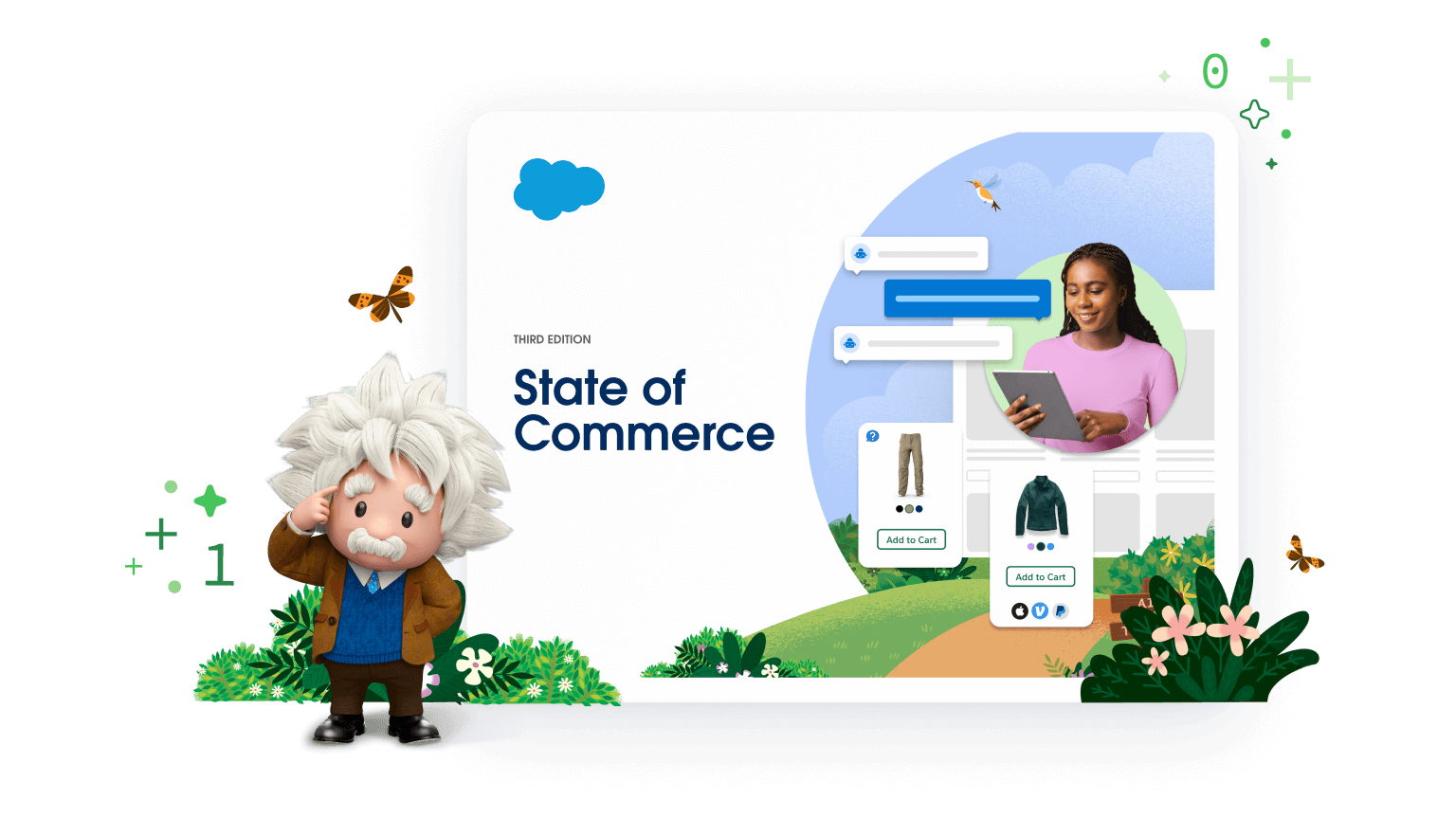When it comes to ecommerce, every conversion is a win — but bigger orders are always an added bonus. High average order value (AOV) is an ecommerce metric that involves more than just getting shoppers to buy from your brand. It’s all about getting them to buy more. Here’s everything you need to know about increasing average order value — and 10 practical tips to get started today.
What you’ll learn:
What is average order value?
Ten ways to increase average order value
How to use AI to increase average order value
AOV is critical — but it’s important to factor in other metrics
Average order value FAQ
What is average order value?
Average order value (AOV) is a crucial ecommerce metric that measures the average amount of revenue generated per order. It provides valuable insights into customer spending habits and overall business performance. By analyzing AOV, you can gain a deeper understanding of your customers’ purchasing behavior, identify trends, and make informed decisions to optimize your sales and marketing strategies.
Calculating AOV is straightforward: Divide the total revenue generated from sales by the number of orders placed over a specific period of time. For instance, if your ecommerce website generates $10,000 in revenue from 100 orders in a month, the AOV for that month would be $100.

AOV serves as one of the ways to assess the financial health and profitability of a given sales channel. Higher average order value generally indicates customers are purchasing more products or services per order, leading to increased revenue and profitability. Conversely, a low AOV may signal the need for strategic adjustments to enhance customer engagement and drive more sales. When you closely monitor your AOV, you can identify areas for improvement and implement strategies to increase revenue. Here’s where to start.
10 Ways to increase average order value
Here are 10 strategies — along with expert tips — that will help increase your average order value.
1. Offer free shipping thresholds
Free shipping for orders that exceed a specific amount is an enticing incentive to encourage shoppers to purchase more items. We’re all familiar with the reasoning: You’re just a few dollars shy of the threshold, so why not add a few accessories to your cart? This strategy not only eliminates a potential barrier to purchase but also positions your business as customer-centric and generous.
💡 Expert tip: To come up with the right minimum order value to activate free shipping, it’s helpful to know how much your average customer spends per transaction. Your free shipping threshold should be slightly (about 30%) above the average order value.
2. Create a loyalty program
Rewarding repeat customers through a loyalty program can significantly enhance your average order value. A successful loyalty program creates a personalized, emotional connection between you and your customers, making shoppers feel seen, heard, and appreciated. By offering points, discounts, or exclusive perks for accumulated purchases, you incentivize customers to spend more time and money with your brand.
💡 Expert tip: Don’t make customers work for it. People don’t want to read fine print or chase down rewards. If it takes too long to sign up or they need to do math to redeem benefits, customers are likely to walk away.
Free Resources for Commerce Teams
3. Bundle products
Ecommerce merchandising strategies, such as product bundles, are also crucial to raise your average order value. Bundling products involves presenting compatible items as a package at a discounted rate. This helps you create perceived value and encourages customers to purchase more items. With this approach, you can simplify the shopping experience and position your business as a thoughtful problem solver.
💡 Expert tip: When it comes to product bundles, it’s crucial that the offer is easy to understand at first glance. Customers want to know how much they will save by purchasing a bundle, along with any other benefits of ordering the items together. Use highly visible badges and banners to tout key benefits like savings or free shipping.
4. Find opportunities to upsell and cross-sell
Upselling involves recommending higher-value versions of the products customers are already considering, while cross-selling suggests complementary products to enhance a primary purchase. These techniques leverage the customer’s existing interest to increase average order value.
💡 Expert tip: Offer a side-by-side comparison of the product and its higher-value alternative. Clearly and succinctly show the differences in features and the value the up-sell provides.
5. Prioritize personalization
Most customers (80%) say that shopping experiences should be better considering all the data companies collect. And 65% of customers expect companies to adapt to their changing needs and preferences. This all comes down to personalization.
Utilizing customer data to create personalized product recommendations and targeted offers is a powerful way to increase AOV. By understanding individual preferences and purchase history, you can deliver relevant suggestions that resonate with customers and encourage them to add more items to their cart. Tools like data intelligence platforms can help with this. They make it easy to visualize all the customer data you collect, analyze it quickly, and activate it to create shopping experiences that resonate and convert.
💡 Expert tip: Identify clear use cases that stitch together transactional, behavioral, and engagement data. Don’t let the project get too big, too quick. Start small to deliver immediate ROI, then add more data to your data model.
6. Optimize product pages
To maximize average order value, your product detail and listing pages should be informative, visually appealing, and easy to navigate. High-quality images, detailed product descriptions, and customer reviews build trust and help customers make informed decisions when they buy, leading to higher order values.
If you include rich content (like video, unique scrolling features, and more) on product pages, it’s critical to make sure they load quickly. According to Cloudflare, site speed “has a large, measurable effect on conversion rates. Studies have consistently shown that fast page speed will result in a better conversion.”
💡 Expert tip: To increase page load times and performance, consider implementing lazy loading. This is a technique that involves only loading certain parts of a product page — especially images — as they are needed (rather than all at once). This enhances the user experience and keeps load times as fast as possible, even on content-heavy pages.
7. Be strategic about discounts and promotions
Thanks to inflation, customers are holding onto their purse strings a little bit tighter, but you can win price-sensitive shoppers with the right discounts and promotions. Limited-time offers, quantity discounts, or special deals create a sense of urgency and encourage customers to purchase, resulting in higher AOV.
To determine which offer types are most compelling to your customers, collect and analyze data. Identify patterns and trends to determine which promotions or discounts are most effective or which consumer segments are most price-sensitive. This will help you tailor discounts to the right customers for maximum average order value.
💡 Expert tip: Consider value-based pricing, dynamic pricing, and other strategies focusing on delivering value rather than simply offering the lowest price. Contrary to popular belief, price-sensitive shoppers often look for value rather than the lowest prices.
8. Provide excellent customer service
Exceptional customer service has always been paramount when it comes to driving customer satisfaction and loyalty. More and more, customer service is seen as a revenue generator. A whopping 85% of decision makers say service is expected to contribute a larger share of
revenue this year. By offering personalized, proactive assistance, resolving queries promptly, and handling complaints effectively, you build trust and encourage customers to make repeat purchases with higher order values. In fact, 88% of customers say that good customer service makes them more likely to purchase again.
💡 Expert tip: Service reps that generate revenue are the ones that have the right data and tools they need to cross- and up-sell effectively. Give your agents the ability to order on behalf of customers, send Pay Now links via direct messages, and interact with shoppers on the channels they prefer.
9. Perform A/B tests on different strategies
Continuously testing different strategies and tactics is crucial to optimizing AOV. A/B testing allows you to compare the effectiveness of various approaches, such as different free shipping thresholds, loyalty program structures, or product bundle combinations. Data-driven insights from A/B testing help you refine your strategies and maximize AOV.
💡 Expert tip: Track your AOV metrics from different angles to get a holistic picture of your success and areas of improvement. Monitor metrics by different customer groups, product categories, traffic sources, or time periods.
10. Use AI and automation
When it comes to increasing average order value, AI is one of the most helpful tools to scale and speed up your efforts. AI can analyze vast amounts of customer data to identify patterns, preferences, and opportunities for personalized recommendations, dynamic pricing, and targeted marketing.
With generative AI tools trained on business data, your merchandising and marketing teams can use natural language prompts to identify tactics that will increase AOV. For example, instead of spending hours digging through data to come up with an AOV strategy, a merchandiser can simply ask an AI-powered copilot, “How can I improve average order value?” A copilot connected to your commerce, sales, service, and marketing platforms can analyze shopper behavior and historical trends to offer practical suggestions. The copilot might respond with recommended product bundles, discounts, or marketing campaigns.
💡 Expert tip: Start small. Begin by implementing AI in one specific area, such as product recommendations or dynamic pricing. Once you see positive results, gradually expand across other aspects of the customer journey.
How to use AI to increase your average order value
Thirty-nine percent of commerce organizations that have implemented AI credit it with major improvements in revenue growth, customer loyalty, and product discovery. That’s because AI-powered tools can provide valuable insights into customer behavior, preferences, and patterns — all of which help you increase average order value. Here’s how you can use AI to ensure that more items end up in more carts.
Get AI-powered insights for growth strategies: Before generative AI, teams had to sift through troves of behavioral and transactional data to spot trends and develop astrategy for growth and conversion. Now, teams can build marketing campaigns, develop new product pages, and create product bundles with AI securely trained on data from across your business. Merchandisers, designers, marketers, and developers can simply interact with conversational AI tools to get guidance for achieving higher AOV.

Provide intelligent product recommendations: AI can quickly analyze customer purchase history, browsing behavior, and product preferences to generate highly relevant product recommendations for your shoppers. Suggested items can be displayed on the product pages, in shopping carts, or in personalized emails.
Win more sales with dynamic pricing: AI can quickly analyze market data, competitor pricing, and customer demand in real-time to set optimal prices for your products. By adjusting prices based on these factors, businesses can maximize revenue while maintaining a competitive edge. For example, during periods of high demand and peak traffic (like holidays or seasonal changes), AI can suggest raising prices slightly to capitalize on customer willingness to pay — thus increasing average order value. Conversely, during slower periods, AI can recommend lowering prices to attract more customers and increase sales volume.
Boost product discovery with AI shopping assistants: AI-powered digital shopping assistants can provide real-time answers and advice to customers, guiding them through the purchasing process. By resolving customer queries promptly and efficiently, chatbots reduce the likelihood of cart abandonment and encourage customers to complete their purchases. Additionally, chatbots can upsell and cross-sell products based on customer preferences and purchase history, further increasing AOV.
Segment and communicate more effectively: AI-powered tools can help you easily segment customers based on their behavior, preferences, and demographics. This allows you to better tailor offers, send highly targeted messages, and increase the chances of customer engagement and conversion. At a time when 73% of customers expect better personalization due to technological advances, segmentation and tailored communication is key.
Perform quick analysis of large data sets: By collecting and analyzing customer data, businesses can identify patterns, trends, and pain points in the purchasing process. This knowledge empowers businesses to make informed decisions about product offerings, pricing strategies, and marketing campaigns. By optimizing these elements data-driven insights and AI, businesses can enhance the customer experience, increase customer satisfaction, and ultimately drive AOV growth.
AOV is critical — but it’s important to factor in other metrics
While revenue represents the total amount of money generated from all orders, AOV specifically measures the average revenue per order. This distinction is important because it allows businesses to assess the effectiveness of their sales strategies and identify areas for improvement. For instance, a high AOV may indicate successful upselling or cross-selling techniques, while a low AOV could suggest a need to optimize product pricing or offer discounts.
It’s worth noting that AOV can vary significantly across different industries and business models. For example, businesses selling high-priced items like electronics or furniture might naturally have a higher AOV compared to those selling goods like clothing or accessories. Additionally, businesses that offer free shipping or discounts for bulk purchases may experience a higher AOV as customers tend to add more items to their carts to take advantage of these incentives.
Several factors influence average order value, including product pricing, product mix, order frequency, and customer demographics. Businesses can strategically adjust these factors to optimize AOV. For instance, offering product bundles or complementary items, implementing dynamic pricing strategies, and personalizing product recommendations can all contribute to increasing AOV. Understanding customer demographics and purchasing patterns can also help businesses tailor their product offerings and marketing strategies to drive higher AOV.
Average order value FAQ
Average order value is a crucial ecommerce metric, and many questions often arise as businesses develop an AOV strategy. Here are answers to a few frequently asked questions.
How is average order value calculated?
AOV is calculated by dividing the total revenue generated from all orders by the number of orders placed during a specific period. For example, if a store generates $10,000 in revenue from 100 orders in a month, the AOV would be $100.
How does AOV impact profitability?
Focusing on average order value can help your business generate more revenue without acquiring additional customers. It costs less to sell more products to existing customers than it does to acquire and sell to new ones. A higher AOV can also improve profitability by helping you spread fixed costs (such as marketing and fulfillment expenses) over a larger sales volume.
Where should I start if I want to increase average order value?
To increase AOV, tried and true methods include implementing AI-powered product recommendations, strategic discounts, and free shipping thresholds. You can also optimize your product pages and checkout experience to ensure that interested shoppers can easily navigate and make purchases on your site.
Build and design a website that converts
Learn 10 key features of an ecommerce website — and how to build them.

































